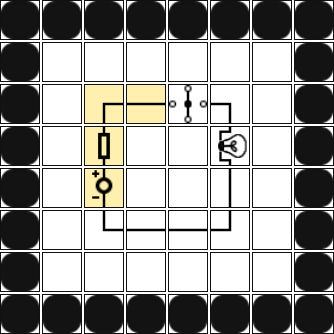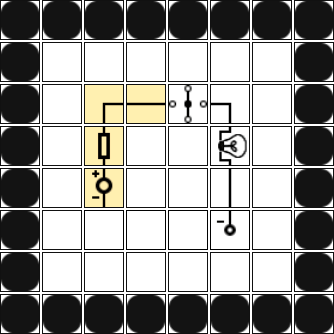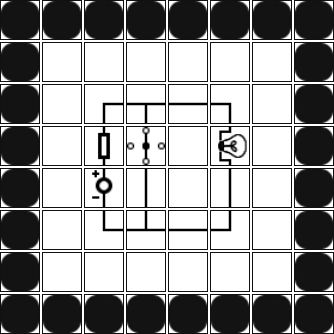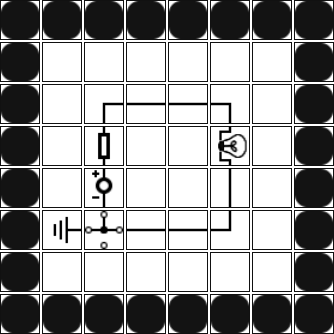Game - The Spark of the Day
Set up the circuit
Click on the squares to adjust the editable components and then press "Test" to check if the spark can pass.
The spark must light the bulb and return to the negative pole. Avoid phase-neutral short circuits and ground faults.
Let’s see how long it takes you. Have fun!
⏳ Tiempo de hoy: --:--
Empty Squares

Border
Empty square, no function.

Empty
Empty square, no function.
Source, Fuse and Bulb

Source
The spark comes out from the positive terminal, must light the bulb, and return to the negative terminal.

Fuse
Faults such as short circuits can blow the fuse.

Bulb
It lights up if the spark passes through it correctly.
Simple Connectors

Straight Cable
Allows passage in a straight line.

Elbow
Allows passage at an angle.

T-Connector
Allows passage in three directions.

Cross
Allows passage in all four directions.
Switches

Switch I
Allows straight-line passage. It can be rotated.

Switch L
Allows passage at an angle. It can be rotated.

Switch T
Allows passage in three directions. It can be rotated.
Special Points

Neutral
Connectivity with the source's negative terminal.

Ground
Ground connections are made for safety.
Start with the first guided challenges to learn how to play:
Tutorial 1

Learn how to close the circuit so the spark leaves the positive terminal, goes through the fuse, passes the bulb to light it up, and returns to the negative terminal.
StartTutorial 2

Discover other ways to guide the spark to points equivalent to the source's negative terminal.
StartTutorial 3

Watch out for the spark! If it reaches the negative terminal without passing through the bulb, it will cause a short circuit and blow the fuse.
StartTutorial 5

All ground faults should be avoided. Not even the source's negative terminal should be connected to ground.
StartTutorial 6

Combine everything you've learned by interacting with all types of elements so the spark lights the bulb.
Start
